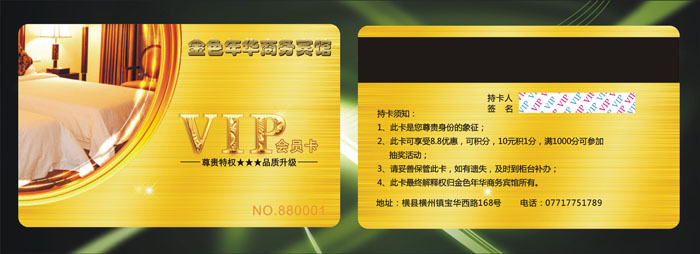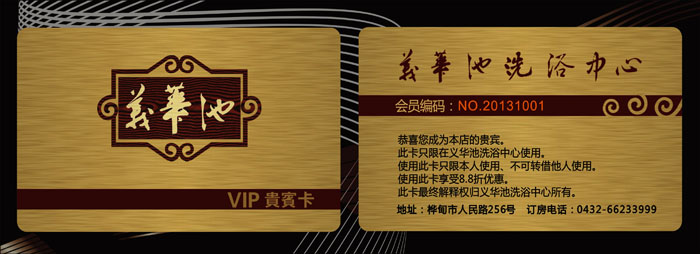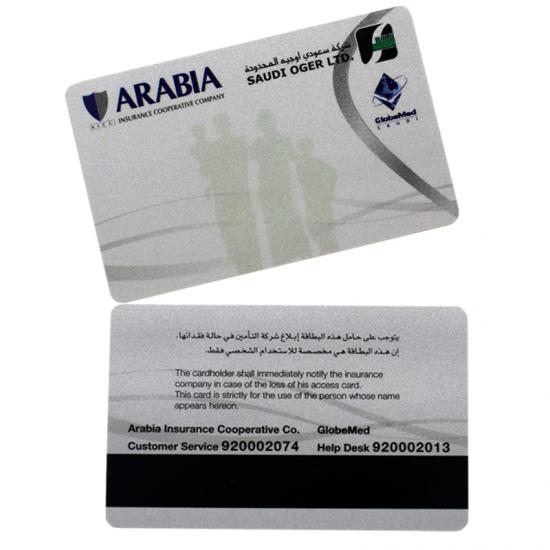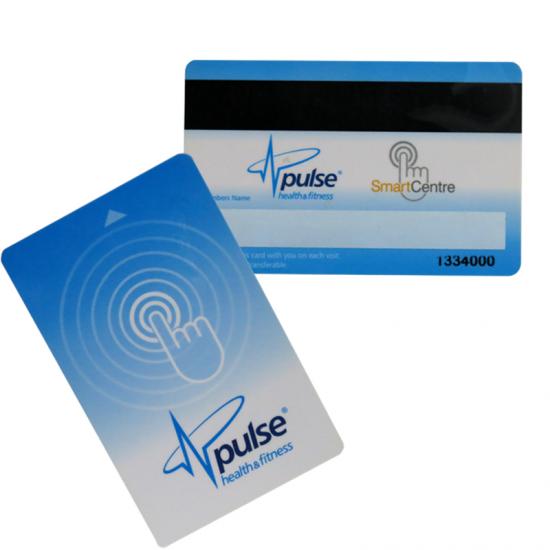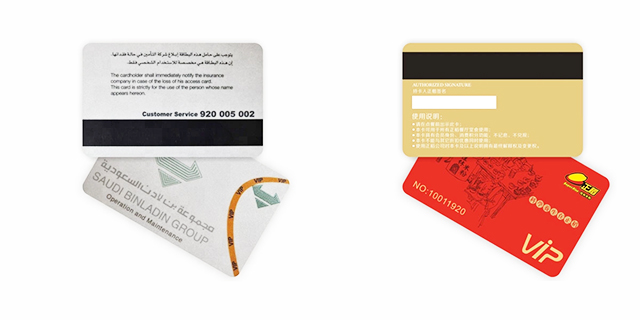Membership card manufacturers, membership card production, membership card customization, membership card price —-HKCARD
Membership cards are usually divided into 3 types. The usage of membership cards is the same. Membership cards are issued by merchants to consumers as a sales method for points, discounts and promotional products. What I want to distinguish here is the material of the membership card. Membership card materials are generally divided into 3 types: advanced material membership card, intermediate material membership card, ordinary material membership card.
1. The premium material membership card is made of copper sheet. After printing, etching, carving and other processes, the copper membership card is novel in style, unique in personality, and elegant and chic. It is the first choice for general real estate, high-end hotels, large chain shopping malls, fashion stores, and brand companies. In order to reflect the respect and service to consumers, many merchants have made the membership cards with discounted points beautifully.
2. The intermediate material membership card is made of PET environmental protection material, and it is made by printing, pressing, bronzing, silk screen, and other exquisite craftsmanship. In China, PET membership cards are generally used in cities with high temperatures, such as Hainan, Sanya and other places. The membership cards issued by local hotels, guesthouses, tourist areas, etc. are mostly PET membership cards.
3. Common material membership cards are made of common PVC materials, which are widely used in all walks of life. Its price is cheap and the material toughness is good. It is produced by common processes such as offset printing, pressing, silk screen printing, coding, etc. Ordinary material membership cards are cheap, and are most suitable for shopping malls with large flow of consumers. Such as: Rainbow shopping mall, Gome, McDonald’s, China Mobile, Agricultural Bank and other well-known large domestic enterprises commonly used.
Standard size of membership card:
Why are bank cards, ID cards, VIP cards and other cards all the same size?
The size of the bank card is stipulated by ISO 7810, the international standard size is 85.50 × 54 mm, and the aspect ratio is similar to the golden section. Because a bank card is a card issued by various commercial banks that customers can freely store and use, this standard is complied with except for individual special-shaped cards. ID cards vary from country to country, but many countries also adhere to this standard (actual thickness and bank card standards may vary). As for membership cards, it should be mainly considered to be convenient to carry and reduce manufacturing costs (the same set of molds can make different cards).
For more membership card production questions, you can consult HKCARD salesmen at any time.
VIP card is a kind of card issued by merchants that consumers can use to purchase products to enjoy discounts, and when a certain amount is reached, points can be exchanged for gifts.
There are VIP cards for “single” use, and there are also “one-card” VIP cards.
A single-use VIP card is generally used in fixed cities such as limited catering, shopping in malls, and online ordering. This kind of VIP card usually uses magnetic stripe or bar code as the information carrier. Low cost and easy to use, it is deeply loved by small store merchants.
“All-in-one card” VIP card, since it is called “All-in-one card” VIP card, it can be imagined that this kind of card is different from ordinary VIP card. This type of VIP card is similar to our bank card. With your card, you can enjoy designated discounts at more than 3,000 special merchants across the country. You can also go to each city to order the products you need on the Internet with your card. Common “All-in-One Card” VIP Cards include KFC “All-in-One Card” VIP Card, McDonald’s “All-In-One Card” VIP Card (most of the VIP Cards issued by McDonald’s are Epoxy Cards), Travel “All-in-One Card” VIP Card, National Bicycle Rental “All-In-One Card” VIP Card, etc. “One-card” VIP cards often use contactless IC chips as information storage carriers. Contactless IC chips are divided into original and domestic chips. Most of the original ones are Dutch Mifare 1K (s50) chips, and the domestic ones are Fudan FM11RF 08 chips.
There is also a network VIP card, a kind of Changyou VIP VIP card recently issued by Sohu.com. Changyou VIP card is divided into two types: ordinary card and gold card. The card number consists of 8 digits on the front of the card. Gold cards are currently only applicable to diamond VIP players, while ordinary cards are applicable to other VIP players of all levels. Players with VIP cards will enjoy the different VIP service experience provided by Sohu Changyou.
Magnetic stripe cards are familiar to the public, from bank cards in wallets to membership cards issued by large and small merchants, most of them are magnetic stripe cards. According to statistics, the annual production volume of magnetic stripe cards is 800 million. Among them, Shenzhen-based card manufacturers take over 750 million cards annually. This staggering number is still rising. While financial magnetic stripe cards are gradually being replaced by chip cards, various consumer magnetic stripe cards make up for the number of financial magnetic stripe cards. Why do so many businesses love magnetic stripe cards? What are the advantages of magnetic stripe cards?
Roughly statistics, magnetic stripe cards can be divided into two types.
One is a financial magnetic stripe card, which is a magnetic recording medium card. It is made of high-strength, high-temperature resistant PET, which is moisture-proof, wear-resistant and has a certain flexibility. It is easy to carry and stable and reliable to use. Usually, one side of the financial magnetic stripe card is printed with explanatory information, such as the card insertion direction; the other side has a magnetic layer or magnetic stripe with 2-3 tracks to record relevant information data. The commonly used brands of financial magnetic stripe cards are KURZ magnetic stripe, Lucky magnetic stripe, Green magnetic stripe, etc. The magnetic strip is divided into ordinary magnetic (300OE) and high diamagnetic (2750OE) according to the magnetic flux density. The width of the magnetic strip is 12.5MM and the thickness is 10-12UM. There are usually two types of lamination and peeling in use, and most of them are laminated in China. That is, the magnetic strip and the PVC card base are combined together through high temperature and high pressure.
The second type is the general consumption magnetic stripe card, such as shopping mall membership card, hotel VIP card, etc. Common consumer magnetic stripe card software is very simple and cheap. Magnetic strips are commonly made in China with low diamagnetism. Lucky magnetic stripes have stable signal amplitude, smooth and tidy magnetic layer surface, and uniform magnetic layer, and good erasability. And the adhesion is good and not easy to fall off. The standard magnetic stripe width is 12.7mm. There are 3 tracks on it, the first track is the outermost, and the second track and the third track (commonly known as the second track and the third track) are respectively inwards. The width of each track is 2.8±0.01mm. The first track is for letters and numbers, the second track is for equal signs and numbers, and the third track is for numbers and characters. The second track is commonly used. If the manufacturer needs to write magnetic, it basically writes the second track.
Barcode cards have a great influence on today’s business, barcode cards are widely used, and their cost is cheap. It is usually used in asset management, commercial promotion, item management, product labeling, etc. Because the barcode density ratio can be adjusted, there are fewer restrictions on use and higher flexibility.
There are many types of barcodes, so I won’t cover them all here. In this column, I will give you a detailed introduction to several common and practical barcodes.
Barcodes can be divided into two categories. One is a one-dimensional code, and the second is a two-dimensional code.
Common one-dimensional codes include Code39 code (standard 39 code), Codabar code (Codabar code), Code25 code (standard 25 code), ITF25 code (interleaved 25 code), Matrix25 code (Matrix 25 code), UPC-A code, UPC-E code, EAN-13 code (EAN-13 international commodity bar code), EAN-8 code (EAN-8 international commodity bar code), China Post Code (a variant of matrix 25 code), Code-B Code, MSI code, Code11 code, Code93 code, ISBN code, ISSN code, Code128 code (Code128 code, including EAN128 code), Code39EMS (EMS dedicated 39 code) and other one-dimensional barcodes. The latter two are commonly used in price tags abroad. Customers need to carefully identify when placing an order and choose the one-dimensional code suitable for their own software. One-dimensional codes can be directly printed on the back of the card, or can be made into inkjet codes or UV codes. Personally, I think the UV code is the most optional, and the UV code is printed with imported UV ink. UV code has high temperature resistance and good flexibility, and will not wear for a long time.
Common QR codes are PDF417 code, Code49 code, Code 16K code, Data Matrix code, MaxiCode code, etc., which are mainly divided into two categories: stacked or layered type and chessboard or matrix type. As a new information storage and transmission technology, two-dimensional barcode has received extensive attention from the international community since its birth. After several years of hard work, it has been used in many fields such as national defense, public safety, transportation, medical care, industry, commerce, finance, customs and government management.
Relying on its huge amount of information carrying, 2D barcodes can include the information stored in the background database when using 1D barcodes in the past. The corresponding information can be obtained directly by reading the barcodes, and the 2D barcodes also have error correction technology. And anti-counterfeiting function, increased data security.
Two-dimensional barcodes can incorporate photos and fingerprints, which can effectively solve the machine-readable and anti-counterfeiting problems of documents. Therefore, it can be widely used in passports, ID cards, driving licenses, military cards, health certificates, insurance cards, etc. Two-dimensional barcode technology is also used in the passports of the Hong Kong Special Administrative Region of my country.
The company’s barcode card uses high-density PET as raw material, fine workmanship, strong and wear-resistant.
Process details:
1. Glossy card: Glossy membership card production is the simplest and most common. It can be divided into screen printing, offset printing and offset printing after screen printing. Hot stamping, magnetic stripe, barcode and signature strip can be added to the silk-screen, offset and glue-gloss membership card production after silk-screen printing. The variety and craftsmanship of the PVC card is also the same as that of the glossy card, only the difference in appearance and feel
2. Frosted card: The production of frosted membership card is similar to that of glossy membership card: only the difference between time sheet lamination and frosted lamination is in the synthesis, and frosted card cannot be added with bronzing, magnetic stripe, barcode and other processes
3. Transparent card: The transparent membership card is made of transparent pvc material and can also be divided into silk screen printing, offset printing and offset printing after screen printing. Hot stamping, magnetic stripe, barcode and signature strip can be added to the silk-screen, offset and glue-gloss membership card production after silk-screen printing. Transparent cards are better than glossy cards in terms of look and feel.
4. Matte card: The production of a matte membership card is similar to that of a glossy card. Only a layer of sub-film is covered on the surface of the glossy card, and the matte card looks neither as bright as the glossy card nor as rough as the frosted card.
If you are a customer who is about to make a card, you can contact HKCARD COMPANY customer service, our smart card designer will be based on your industry and application field. We will design the most creative, individual and industry-specific smart card renderings for you. There will be more discounts for telephone consultations now.
Our advantage:
1. Brand: The earliest card factory. Professional card making, trustworthy!
2. Quality: More than ten years of card making experience, using the best high-quality materials and imported production equipment!
3. Service: We are anxious for the needs of customers and think about what customers think!
Order process:
First: accept orders (design draft) through QQ, WeChat, mail, express, network hard disk, etc.
Second: If the customer does not have a design draft, we can help design it.
Third: After the manuscript is confirmed, our company will be responsible for making the order, and your company will confirm (or confirm by phone).
Fourth: The production cycle is subject to the single quantity and the process.
Fifth: Delivery method: (self-pickup, express, truck, postal, railway, air,) optional.
HKCARD card factory promises: to ensure the best quality, delivery time, price and service among comparable products in the card manufacturing industry!
All HKCARD cards are encapsulated by high-density PVC material, with fine workmanship, exquisite fashion, high temperature resistance, sturdy and wear-resistant.
HKCARD ELECTRONICS CO.,LIMITED
Phone/Whatsapp/wechat:+8615817372512
Skype: byron1681
Email: byron@cardmfg.com

